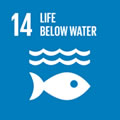Por favor, use este identificador para citar o enlazar a este item:
http://hdl.handle.net/10261/285888COMPARTIR / EXPORTAR:
 SHARE SHARE
 CORE
BASE CORE
BASE
|
|
| Visualizar otros formatos: MARC | Dublin Core | RDF | ORE | MODS | METS | DIDL | DATACITE | |

| Título: | Contrasting particle fluxes and composition in a submarine canyon affected by natural sediment transport events and bottom trawling |
Autor: | Paradis Vilar, Sarah CSIC ORCID; Arjona-Camas, Marta CSIC ORCID ; Goñi, Miguel; Palanques, Albert CSIC ORCID ; Masqué, Pere CSIC ORCID; Puig, Pere CSIC ORCID | Palabras clave: | Submarine canyon NW Mediterranean Surface sediment Sediment transport Carbon cycle Biomarkers Storms Bottom trawling |
Fecha de publicación: | oct-2022 | Editor: | Frontiers Media | Citación: | Frontiers in Marine Science 9: 1017052 (2022) | Resumen: | Submarine canyons are important conduits of sediment and organic matter to deep-sea environments, mainly during high-energy natural events such as storms, river floods, or dense shelf water cascading, but also due to human activities such as bottom trawling. The contributions of natural and trawling-induced sediment and organic matter inputs into Palamós Canyon (NW Mediterranean) were assessed from three instrumented moorings deployed in the axis and northern flank of the canyon covering the trawling closure (February) and the trawling season (March-December) of 2017. During the trawling closure, large sediment fluxes with high contents of labile marine organic matter content were registered in the canyon axis, associated to storm resuspension on the shelf that coincided with dense shelf water cascading and high surface water productivity. Although no major natural sediment transport events occurred during the following spring and summer months, near-daily trawling-induced sediment gravity flows were recorded in the northern flank mooring, placed directly below a fishing ground, which sometimes reached the canyon axis. Compositionally, the organic matter transferred by trawling resuspension was impoverished in the most labile biomarkers (fatty acids, amino acids, and dicarboxylic acids) and had a high degree of degradation, which was similar to surficial sediment from the adjacent fishing ground. Trawling resuspended particles masked the transfer of organic matter enriched in labile biomarkers that naturally occur during the quiescent summer months. Overall, bottom trawling enhances the magnitude of particle fluxes while modifying its organic carbon composition, increasing the re-exposure and transfer of degraded organic carbon and potentially affecting benthic communities that rely on the arrival of fresh organic matter | Descripción: | 20 pages, 10 figures, supplementary material https://www.frontiersin.org/articles/10.3389/fmars.2022.1017052/full#supplementary-material.-- Data availability statement: The raw data supporting the conclusions of this article will be made available by the authors, without undue reservation | Versión del editor: | https://doi.org/10.3389/fmars.2022.1017052 | URI: | http://hdl.handle.net/10261/285888 | DOI: | 10.3389/fmars.2022.1017052 | E-ISSN: | 2296-7745 |
| Aparece en las colecciones: | (ICM) Artículos |
Ficheros en este ítem:
| Fichero | Descripción | Tamaño | Formato | |
|---|---|---|---|---|
| Paradis_et_al_2022.pdf | 16,32 MB | Adobe PDF |  Visualizar/Abrir | |
| Paradis_et_al_2022_suppl.pdf | 2,01 MB | Adobe PDF |  Visualizar/Abrir |
CORE Recommender
SCOPUSTM
Citations
5
checked on 13-may-2024
WEB OF SCIENCETM
Citations
4
checked on 18-feb-2024
Page view(s)
51
checked on 15-may-2024
Download(s)
39
checked on 15-may-2024
Google ScholarTM
Check
Altmetric
Altmetric
Este item está licenciado bajo una Licencia Creative Commons



